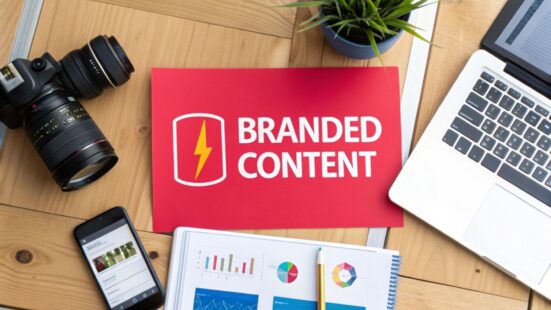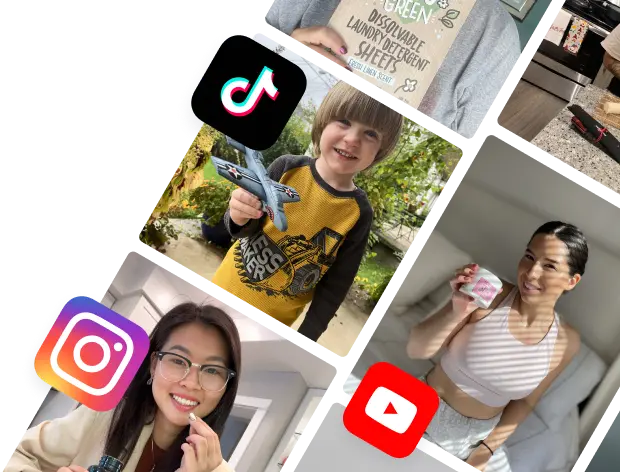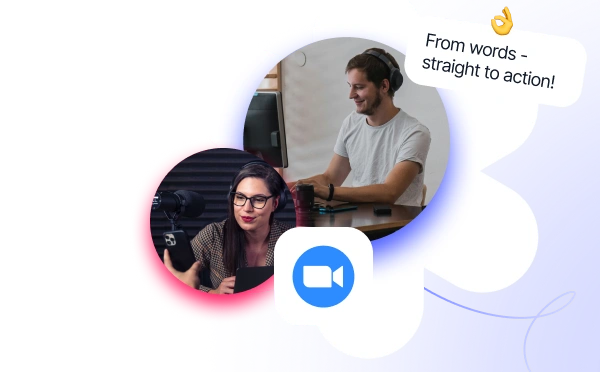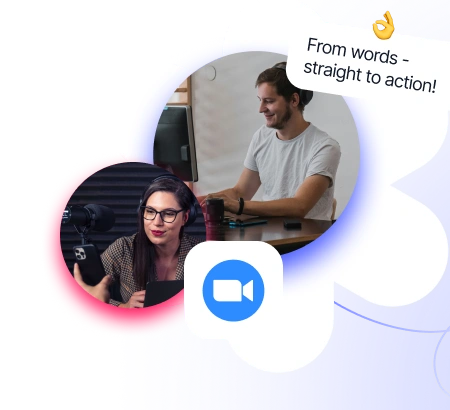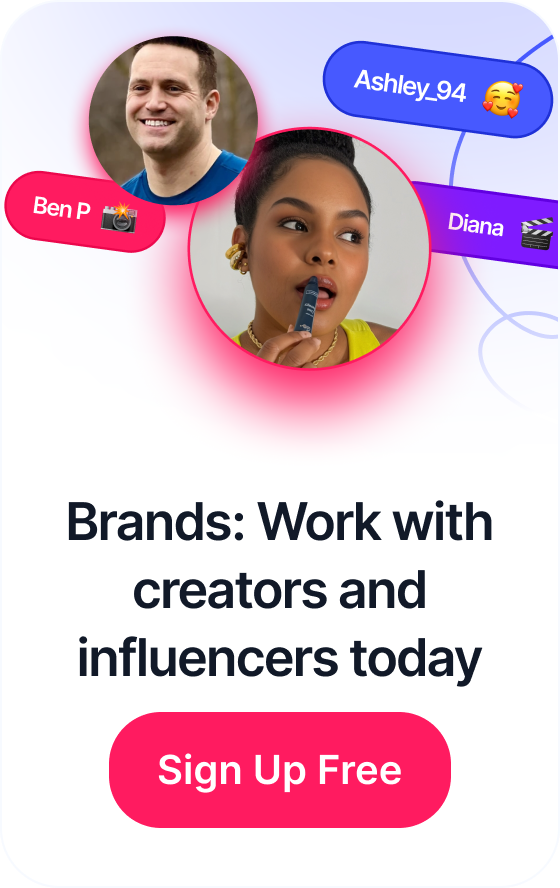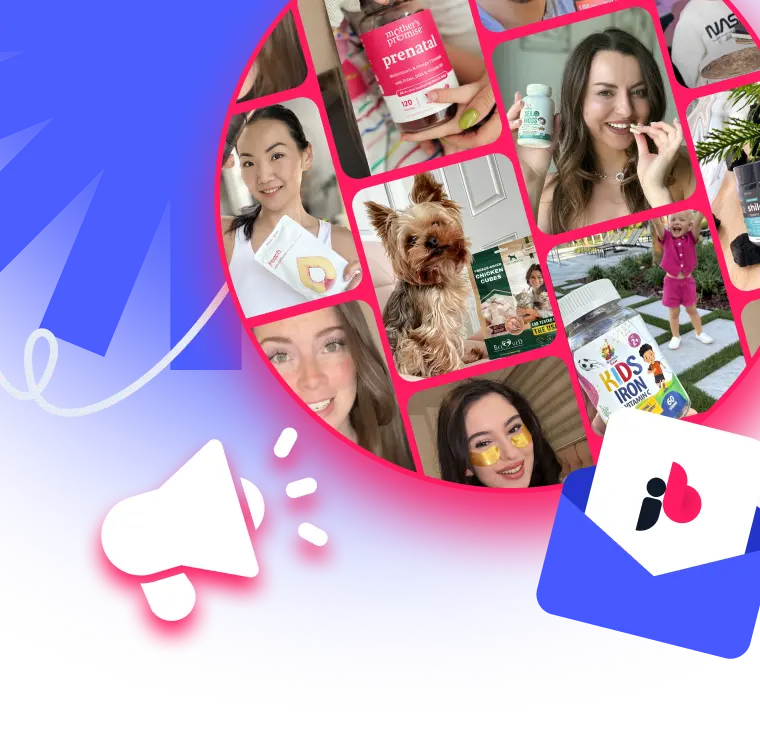 How to Track Social Media Analytics
How to Track Social Media Analytics
Ever heard of marketing that doesn't feel like marketing? That’s the magic of branded content. It's the craft of creating something your audience genuinely wants to watch, read, or engage with because it’s entertaining, useful, or just plain cool. The brand is there, but it's not the star of the show; the story is.
Table of Contents
So, What Is Branded Content Exactly?
Forget the commercials that interrupt your favorite show. Branded content is the show, thoughtfully created by a brand. The whole point is to forge an emotional connection and make people associate the brand with a certain feeling or value. Instead of a hard sales pitch, it's about offering something valuable, making the brand a welcome guest in the consumer's world, not an intruder.
To really get it, it helps to understand the definition of content creation in general. While content creation is just the act of making stuff, branded content is a specific strategy that puts the audience's experience front and center, way ahead of any product promotion. The whole approach is built on authentic storytelling—a seriously powerful way to build relationships that last. If you want to dive deeper into that, we've got a great guide on what is brand storytelling.
The Core Pillars Of Effective Branded Content
Any branded content that really hits the mark is built on three pillars that lean on each other to create affinity and trust.
This infographic breaks down how these concepts fit together, forming the bedrock of any solid branded content plan.
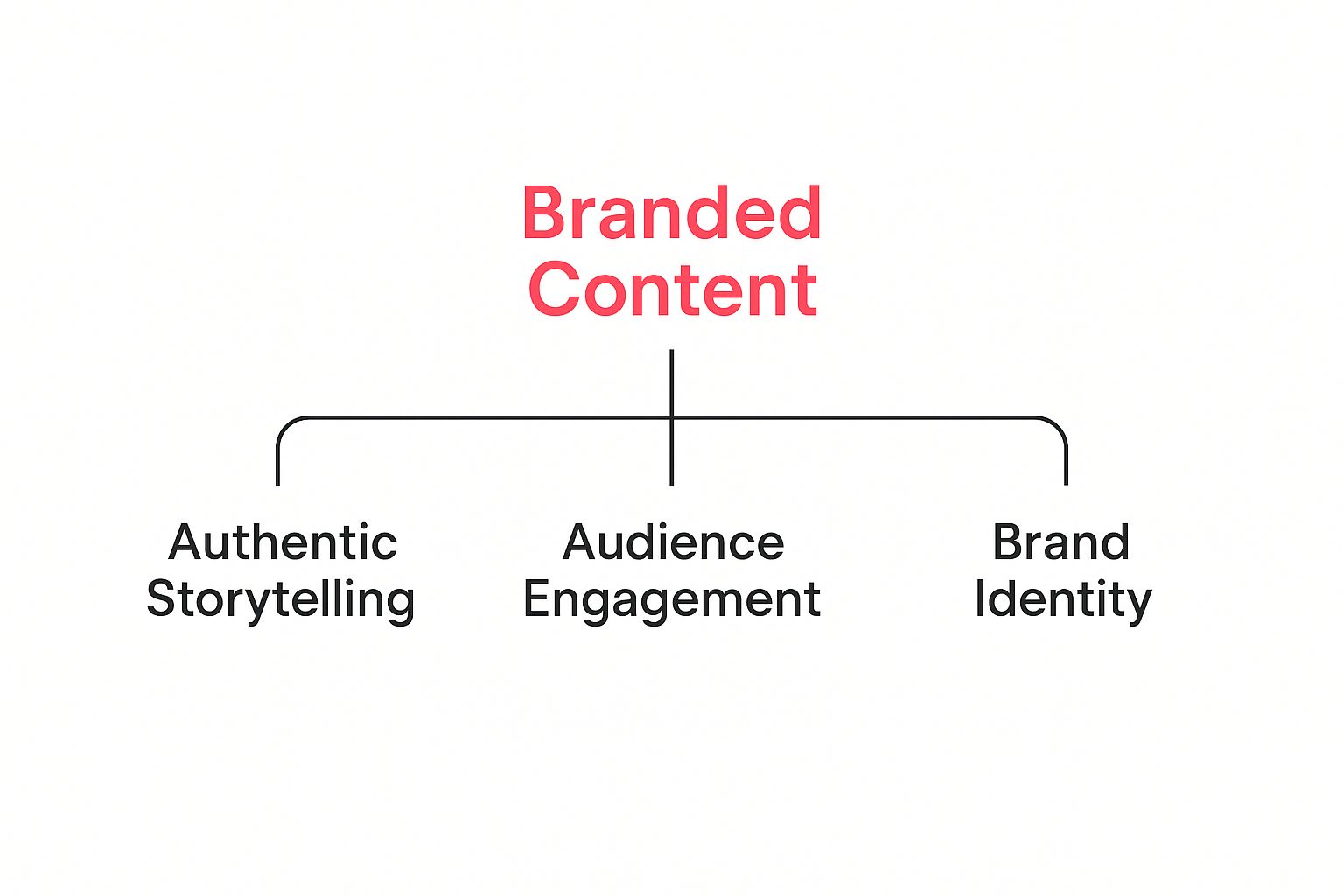
As you can see, authentic storytelling is the engine. It powers audience engagement, which in turn helps define and communicate the brand's true identity.
At the end of the day, this strategy is about earning attention, not buying it. And in today's world, trust is everything. Research shows that by 2025, a whopping 81% of consumers say they need to trust a brand before they even think about buying from it. That makes being genuine a non-negotiable part of the deal. That trust is what turns a one-time buyer into a loyal, long-term customer.
The Strategic Goal of Branded Content

Traditional ads are all about the "what." The product, the price, the BOGO offer flashing on your screen. Branded content, on the other hand, digs into a much deeper, more interesting question: the "why."
The whole point isn't just to be seen by your audience, but to be felt. It’s a long game, focused on building a genuine emotional connection that lasts far longer than a single click or purchase.
Instead of just shouting your name from the rooftops (brand awareness), the goal is to show people what you truly stand for. It’s about linking your brand to bigger ideas and values—things like creativity, community, resilience, or innovation.
Building Emotional Equity
Think of every piece of valuable content you create as a deposit into an emotional equity account with your audience. You're not asking for anything; you're just giving them something useful, entertaining, or inspiring.
Over time, this account builds a massive reserve of goodwill and trust. In a marketplace where everyone is yelling, your brand becomes the one that's memorable and even preferred.
Imagine a software company that funds a short documentary series profiling young inventors solving real-world problems. They’re not demoing their software or listing features. They're wrapping their brand around the spirit of human ingenuity. You walk away associating that company with progress and hope—a feeling that’s way more powerful than any sales pitch.
This strategy is all about cultivating long-term loyalty. When someone trusts your brand and feels like you share their values, they'll choose you consistently—not because you're the cheapest, but because they believe in what you represent.
This foundation of shared belief is what turns customers into advocates. You're building a relationship on mutual respect, not just clever persuasion.
Differentiating in a Saturated Market
Let’s be real: consumers are hit with thousands of ads every single day. Most of it is just noise. Branded content is your way of cutting through that static.
It doesn’t interrupt what people are interested in; it becomes what they're interested in. That’s a game-changing shift if you want to earn—not just grab—people's attention.
When a brand gets this right, a few magical things happen:
- It Creates Lasting Impressions: People remember emotional stories. They forget facts and figures almost instantly.
- It Fosters Brand Affinity: Your audience starts to genuinely like and root for your brand because you provide real value.
- It Enhances Perceived Value: When you align with positive, inspiring themes, your brand itself starts to feel more premium and important.
Ultimately, the goal is to become unforgettable. Long after a competitor's flashy ad has faded from memory, the feeling your branded content created will stick around. This is how you stop being just another business and start becoming a beloved brand.
Exploring Different Types of Branded Content
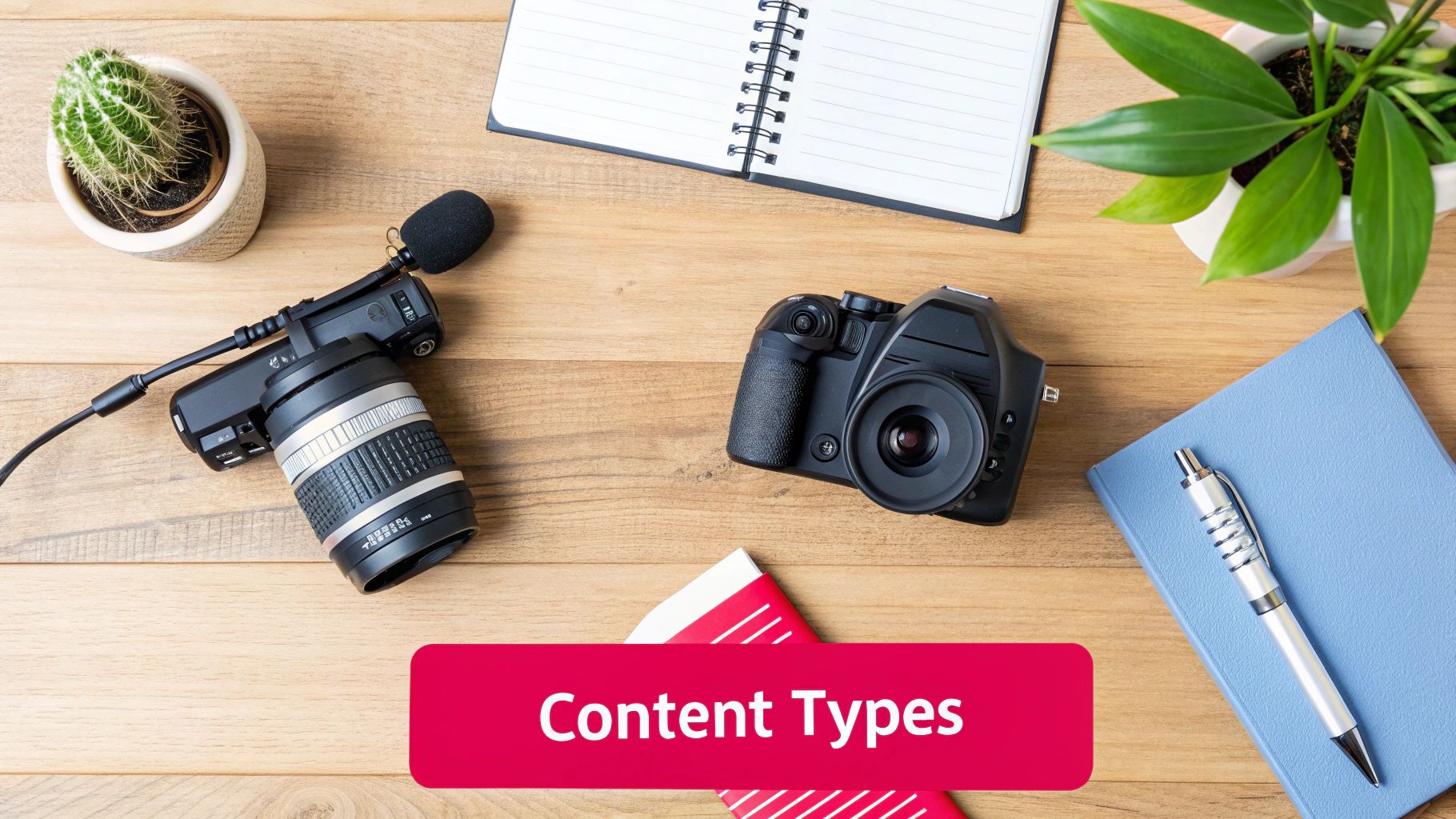
Branded content isn’t some one-size-fits-all formula. Think of it more like a creative playground with a ton of different ways to play. The format you pick is just as crucial as the story you tell because it dictates exactly how and where your audience connects with your message.
The real trick is matching the medium to what you want to achieve and, more importantly, to how your audience actually likes to consume content. Whether you're making a cinematic short film or building a handy interactive tool, each format gives you a unique angle to build a genuine connection.
Written Content and Articles
Let's start with the fundamentals: long-form articles, blog posts, and sponsored editorials. These are the bedrock of branded content for a reason. They give you the space to dive deep into topics, establishing your brand as a go-to resource and a voice of authority.
This format is perfect when you need to unpack detailed information, tell a complex story, or offer up some truly practical advice. For example, a financial services company could publish a beefy, comprehensive guide to buying your first home. This content delivers massive value and builds trust long before someone even thinks about a mortgage application. You become a helpful guide, not just another service provider.
Video Series and Short Films
If you want to hit people in the feels, video is your best bet. It's arguably the most powerful medium for emotional storytelling out there. A well-produced short film or an episodic series can build a narrative that gets viewers invested, forging a powerful bond with the brand behind it all.
Just look at a brand like Red Bull. They produce incredible documentary-style content about extreme sports, but the videos are almost never about the energy drink itself. They're about what it means to push human limits. This masterfully aligns the brand with courage and adventure in a way a traditional ad never could.
Video just works. It can communicate complex emotions and stories in a format that's incredibly easy to digest. A 3-minute video can often build more brand loyalty than a 30-page report ever will.
The most effective branded content feels like a gift to the audience. Whether it's a beautifully shot film, a genuinely useful article, or an entertaining podcast, the value it provides is what earns their attention and loyalty.
Podcasts and Audio Experiences
With the explosion of audio, branded podcasts have emerged as a surprisingly intimate way to connect with people. Listeners often tune in during their commute, at the gym, or while doing chores, allowing your brand to become a welcome part of their daily routine.
A killer branded podcast is all about compelling conversations and great storytelling, not clumsy product placements. Imagine a mattress company creating a podcast about the science of sleep and productivity, interviewing experts in the field. This positions them as an authority on wellness, building credibility and trust with every single episode. It’s all about being genuinely helpful and establishing expertise.
Interactive Tools and Experiences
Some of the most creative branded content moves beyond just watching or listening and invites people to participate. We're talking about interactive experiences like online calculators, fun quizzes, or even immersive digital worlds.
A big part of this involves tapping into new tech. For example, brands are increasingly exploring how Augmented Reality in Marketing can create more engaging and memorable experiences.
But you don't need a massive tech budget to be interactive. A more direct and powerful format is user-generated content (UGC), where your audience actually becomes part of the story. Encouraging customers to share their own experiences builds an incredible sense of community and authenticity. To see how this works in the real world, check out our complete guide on how to make UGC.
Iconic Branded Content Examples to Learn From
Theory is great, but seeing branded content in action is where the real learning happens. To make these concepts stick, let's break down a few legendary campaigns.
These brands did more than just sell a product—they shifted conversations and became cultural touchstones. They didn't interrupt people with ads; they earned their undivided attention with stories worth watching.
Dove's Real Beauty Sketches
Dove’s “Real Beauty Sketches” campaign is a masterclass in hitting an emotional nerve. The goal wasn't to move more soap off the shelves. It was to spark a global conversation about self-perception and challenge the impossibly narrow standards of beauty we see everywhere.
The format was brilliantly simple: a short, documentary-style video. The concept? A forensic artist drew women twice. First, based on how they described themselves, and second, based on a stranger’s description.
The stranger's version was always kinder, more accurate, and more beautiful. The big reveal showed the harsh gap between how women see themselves and how the world sees them. It tapped into a universal insecurity and delivered a powerful, shareable message of self-acceptance. By taking a stand, Dove became synonymous with authenticity and empowerment.
The LEGO Movie
How do you make a 100-minute commercial that people will not only pay to see but also rave about to their friends? You create "The LEGO Movie." This was branded content on an absolutely epic scale.
The movie’s purpose was to reignite the magic of the LEGO brand for a new generation while reminding adults why they loved it in the first place. It was all about celebrating creativity and the pure joy of building.
By focusing on a universally loved story instead of a product lineup, LEGO reminded everyone why they fell in love with the brand in the first place—for the limitless possibilities in a bucket of bricks.
This wasn't just a movie; it was a strategic move that cemented LEGO as a true entertainment powerhouse, not just a toy company.
Patagonia's Environmental Films
Patagonia has built its entire identity around environmental activism, and its films are the ultimate proof. Instead of making ads about jackets, they produce stunning documentaries about conservation, climate challenges, and the raw beauty of the wild.
Films like "Artifishal" don't pull any punches. They are compelling, educational stories designed to inspire action.
Through this content, Patagonia becomes more than a brand; it becomes a trusted voice in the fight to protect our planet. This builds a fiercely loyal community that buys their gear because they believe in the company's mission. It’s a powerful reminder that sometimes, the best way to promote your brand is to talk about something much bigger than your brand.
Powerful storytelling is clearly worth more than a thousand ads. And brands are catching on. With social media ad spend projected to hit $276.7 billion by 2025, the investment in content that truly connects—especially video—is only going up. You can dig into more of the latest social media trends and statistics on Sproutsocial.com.
The Benefits for Brands and Content Creators
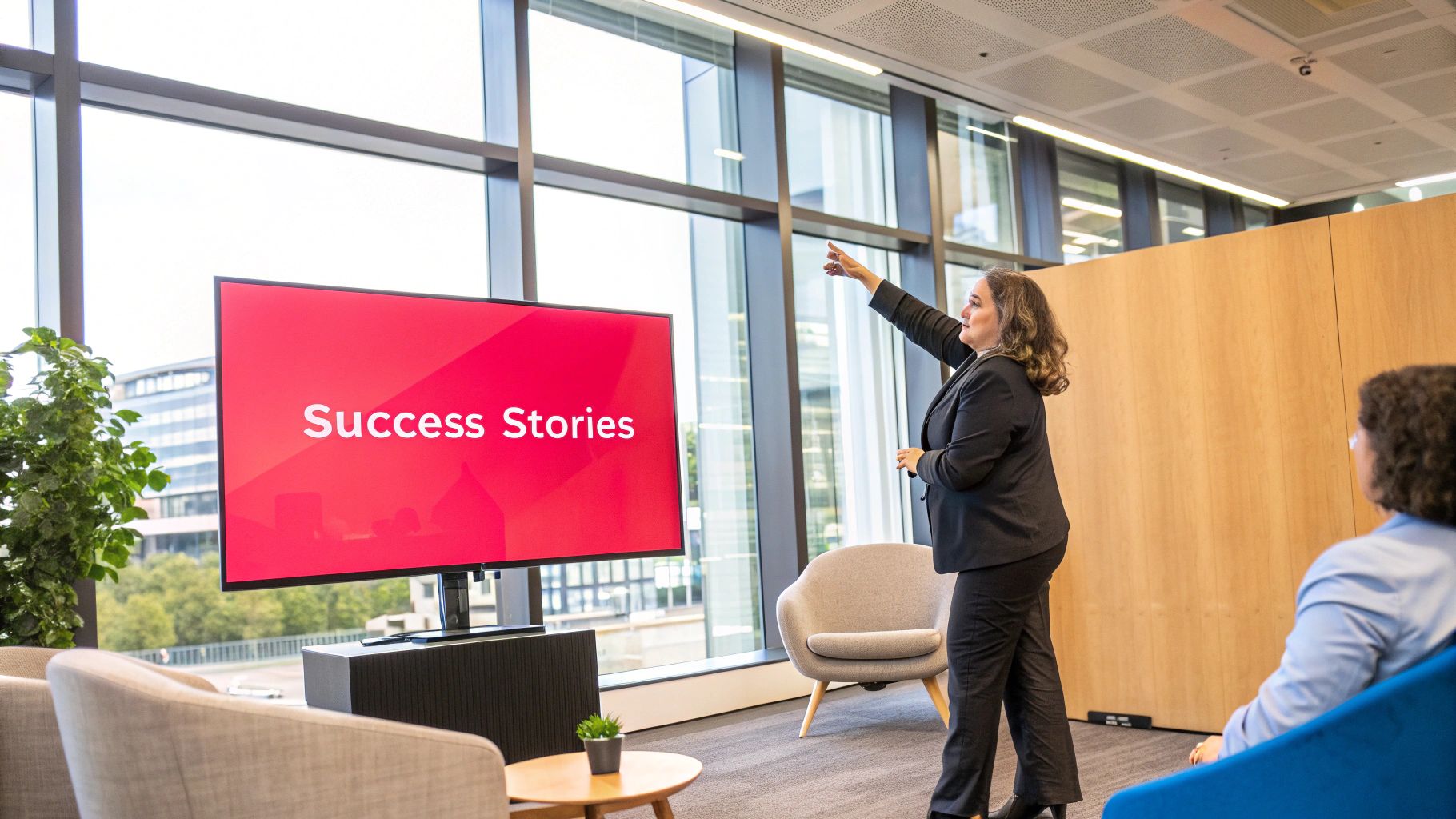
Branded content is so much more than a simple transaction. Think of it as a powerful partnership where everyone involved comes out ahead. For brands, it unlocks a genuine connection with an audience that traditional ads just can't buy. For creators, it opens up new revenue streams and the resources to tackle bigger, more ambitious projects.
This kind of collaboration is built on the shared goal of delivering real value. When a brand and a creator team up authentically, they boost each other's credibility. It's the ultimate win-win, and it's absolutely essential for anyone trying to make it in the creator economy today.
Let's break down exactly what each side gets out of the deal.
How Brands Win with Branded Content
For brands, the biggest upside is the ability to cut through the noise. We're all tired of ads. Instead of interrupting someone's feed, your message becomes a welcome piece of entertainment or information, which naturally leads to much deeper engagement.
This approach builds a positive feeling around your brand that you just can't get with standard advertising. By pairing your name with high-quality, valuable content, you're building trust and loyalty. This isn't just about making one sale; it's about creating a community of fans who feel connected to what you're doing.
And the results of that trust? They're impressive. By 2025, branded content from influencers is expected to deliver an average ROI of $5.78 for every $1 spent. That efficiency comes from a simple fact: 61% of consumers trust recommendations from influencers more than they trust traditional ads. If you want to dive deeper into the numbers, Sprinklr.com has some great insights on social media marketing returns.
Branded content isn’t about tricking your audience; it’s about earning their attention. By creating something they genuinely want to see, you build brand equity that pays dividends long after the campaign ends.
How Creators Win Through Collaboration
For content creators, these partnerships are a total game-changer. They provide a vital stream of income that allows creators to invest back into their craft, leading to better cameras, better editing, and ultimately, better content for their audience.
But it’s not just about the money. Working with well-known brands adds a layer of professionalism and credibility to a creator's channel. It’s a signal to the world that their work is valued and respected, which can attract even more opportunities and a bigger, more dedicated following.
Ultimately, branded content empowers creators to level up their ambitions.
- Elevated Production Value: That brand budget can be the difference-maker, funding better equipment, travel to new locations, or guest experts that make the content shine.
- Creative Freedom: Most savvy brands give creators plenty of creative control. They know the creator’s authentic voice is what makes the partnership work in the first place.
- Audience Growth: Teaming up with a big-name brand can introduce a creator to a whole new audience, supercharging their growth and expanding their reach almost overnight.
Answering Your Top Branded Content Questions
Once you start digging into branded content, a few questions always seem to surface. This is where things can get a little murky, especially when people start tossing around terms like "native advertising."
Let's clear the air on some of the most common points of confusion. Nailing these distinctions is key to building a solid strategy you can move forward with confidently. We'll cover the key differences, the metrics that actually matter, and the rules of the road you absolutely can’t afford to ignore.
What Is The Difference Between Branded Content and Native Advertising?
This is a big one. While both branded content and native advertising are designed to feel like a natural part of whatever platform you find them on, their core purposes are worlds apart. It all comes down to their intention.
Native advertising is basically an ad playing dress-up. Its main goal is to blend in with the surrounding posts to get you to take an immediate action, like clicking a link or making a purchase right then and there. It's built to look like regular content, but at its heart, it's a direct-response ad.
Branded content, on the other hand, is all about providing genuine value—whether that's through entertainment or useful information. The brand either creates it or sponsors it, but the goal is to build an emotional connection and brand affinity through great storytelling. People choose to engage with it because it's good, not because it's pushing a sale.
The easiest way to spot the difference? Ask yourself: "What is this content's primary job?" If the answer is "to sell," you're looking at native advertising. If it's "to connect," it's branded content.
How Do You Measure The ROI of Branded Content?
Trying to measure the return on investment (ROI) for branded content means you have to look beyond the cash register. Since immediate sales aren't the main goal, you need a different scorecard to track success.
Instead of getting bogged down in short-term conversion stats, the focus should be on the long-term health of your brand and the relationships you're building with customers. The real payoff is in building brand equity that grows over time.
To get the full picture, you should be tracking metrics like:
- Audience Engagement: We're talking about shares, comments, likes, and how long people stick around to watch your videos. Are people just scrolling past, or are they actually stopping to interact?
- Brand Lift: This is a big one. You can use surveys before and after a campaign to see if you've moved the needle on things like brand perception, awareness, and purchase intent. Did the content actually change how people feel about you?
- Audience Growth: Keep a close eye on new subscribers, followers, or email sign-ups that roll in while the campaign is live. Is your content bringing new people into your community?
These indicators give you a much better sense of how your content is building trust and loyalty—two things that are absolute gold for driving future revenue.
Is It Necessary to Disclose Branded Content?
Yes. 100% yes. There is zero gray area here.
Transparency is the bedrock of audience trust, which is the entire point of this strategy in the first place. Trying to hide a paid partnership is the fastest way to torch the credibility of both the brand and the creator involved.
Regulatory bodies are crystal clear on this. Brands and creators have to follow the rules to make sure consumers aren't being misled. A hidden sponsorship isn't just unethical; it can land you in serious legal trouble. You can get the full rundown by reading the official FTC guidelines for influencers.
Always use obvious disclosures, like:
- "Sponsored by [Brand]"
- "#ad" or "#sponsored"
- "In partnership with [Brand]"
Being honest isn’t just a nice-to-have, it's a non-negotiable. Your audience will respect the transparency, and that only makes the authentic connection you're working so hard to build even stronger.
Ready to connect with a network of over 250,000 creators to produce high-impact branded content? JoinBrands makes it simple to manage campaigns, match with the right talent, and accelerate your brand's growth. Discover how our all-in-one platform can amplify your social presence by visiting https://joinbrands.com.
